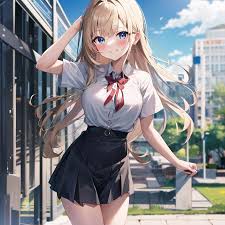The intersection of artificial intelligence and art has sparked debate across various mediums, with particular interest in how AI might influence the creation of hentai, a genre of Japanese anime and manga that focuses on erotic content. As AI technology advances, it is crucial to explore whether these tools could potentially replace human artists in this specific field. This analysis delves into the capabilities, limitations, and ethical considerations of using AI to create hentai content.
Technological Capabilities of AI in Art
AI's Proficiency in Generating Images
AI technology has reached a point where it can generate detailed and high-resolution images that cater to a wide range of artistic styles. Tools like AI Hentai leverage advanced neural networks that can replicate the intricate lines and unique color palettes characteristic of hentai art. These systems are trained on datasets containing thousands of hentai images, enabling them to produce new artworks that are visually similar to those created by human artists.
Customization and Scalability
One of the main advantages of AI in art creation is its ability to scale and adapt quickly. AI systems can generate multiple variations of a single concept in a fraction of the time it would take a human artist, making it a powerful tool for creating extensive hentai collections swiftly. Additionally, AI can adjust elements such as style, color, and composition based on user preferences, providing a customized experience that is difficult to achieve manually.
Limitations of AI in Capturing Human Creativity
Lack of Emotional Depth and Context
Despite its proficiency in mimicking styles, AI still lacks the ability to fully understand and convey the emotional depth that human artists infuse into their work. Hentai, like all forms of art, often communicates complex human emotions and narratives that AI may not grasp entirely. The nuances of storytelling and emotional expression in hentai are shaped by cultural, social, and personal experiences that AI cannot authentically replicate.
Ethical and Legal Concerns
The use of AI to create hentai also raises significant ethical questions. Issues such as consent in the use of likenesses and the ethical implications of depicting certain content are complex and require careful consideration. Furthermore, copyright laws have yet to catch up with the capabilities of AI, leading to potential legal challenges concerning the ownership and originality of AI-generated art.
The Role of Human Artists in an AI-Dominated Landscape
Irreplaceable Human Touch
While AI can assist in the technical process of creating hentai, the unique touch, creativity, and personal expression of human artists are irreplaceable. Human artists bring their own experiences, emotions, and perspectives to their work, creating a deep connection with their audience. This connection is something AI has yet to achieve and may never fully replicate.
Collaboration Between AI and Humans
Instead of viewing AI as a replacement for human artists, a more practical approach is to see it as a tool that can augment human creativity. Artists can use AI to handle certain elements of the creative process, such as drafting and coloring, allowing them to focus more on the creative aspects of art such as story development and character building. This collaborative approach can enhance productivity without sacrificing the artistic integrity of the hentai genre.
Navigating the Future Together
As the technology continues to evolve, the conversation about AI’s role in art, including hentai, will undoubtedly continue. It is crucial for creators, consumers, and technologists to engage in ongoing discussions about the ethical use of AI in art to ensure that this powerful technology enhances rather than diminishes human creativity.
In conclusion, while AI can support the process of creating hentai by offering tools that increase efficiency and customization, it is unlikely to replace human artists entirely. The personal touch, emotional depth, and cultural context that human artists bring to their work are invaluable and irreplaceable. Embracing AI as a collaborative tool rather than a substitute for human creativity may be the most effective way to harness the best of both worlds.
